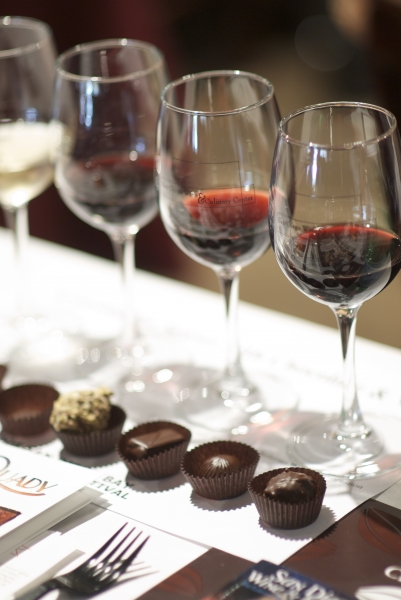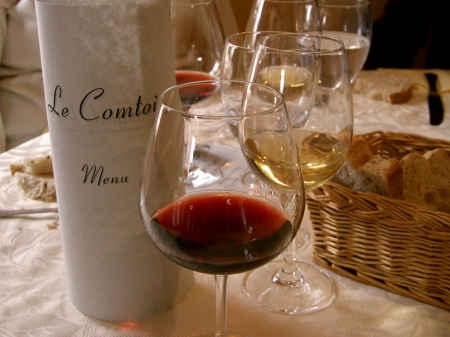Red Wine Tasting
It can be a bit intimidating to sit in front of a glass of red wine and drink it, especially when it's the first time you try it. Below we have described a basic tasting guide that can help you truly experience the experience of sitting down to a red wine flight. ![]() If you follow these taste tips, you will discover the best red wines for your palate. Those who know little about red wine can learn a lot by simply looking at the bottle. Every wine is different and unique, so the more we know about what we sip, the better. We can say that we do not like wine with a woody taste or wine with a rather sweet taste. Ask yourself if you like this wine or donate it so that we can help you better understand the various elements that you enjoy and perhaps not so much enjoy. Normally, the person in charge of the tasting has suggestions as to which wines should be tasted in which order. We hope this simple guide will have helped you to choose your wine for your first tastings. The order of tasting can make a big difference when it comes to the overall taste of the grapes. If you taste the wines in the right order, you will be able to enjoy the rich, complex flavors better during your wine tasting.
If you follow these taste tips, you will discover the best red wines for your palate. Those who know little about red wine can learn a lot by simply looking at the bottle. Every wine is different and unique, so the more we know about what we sip, the better. We can say that we do not like wine with a woody taste or wine with a rather sweet taste. Ask yourself if you like this wine or donate it so that we can help you better understand the various elements that you enjoy and perhaps not so much enjoy. Normally, the person in charge of the tasting has suggestions as to which wines should be tasted in which order. We hope this simple guide will have helped you to choose your wine for your first tastings. The order of tasting can make a big difference when it comes to the overall taste of the grapes. If you taste the wines in the right order, you will be able to enjoy the rich, complex flavors better during your wine tasting.  Pinot has cult status among wine freaks because the flavors and aromas can be quite surprising and the elements just go together so well.
Pinot has cult status among wine freaks because the flavors and aromas can be quite surprising and the elements just go together so well.
Light Reds vs. Bold Reds
This wine is very light red in the glass and has the brightest body of all the wines you will taste. When you smell this wine, you will often get aromas of cherries, raspberries, and cranberries. It is important to note that the wine and the grapes from which it is made are quite complex and if you share your scents and tastes, it will smell of both red and white wine. You will notice that this wine contains a wide range of scents and aromas, and its smell can tell you a lot about the wine and its potential character. When examining Rhone wines, for example, the scent of dark fruits such as blackberries and plums can tell tasters that the wine is made from ripe berries. Travel and Stay these areas and experience the wines firsthand. When examining wines that have matured in oak, it is also possible to provide information about the type of grape and the length of maturation of the grape. Tannin is a characteristic red wine characteristic, but is only perceived on the palate and only in red wines. Cotton ball - like drying - is due to the presence of tannins in the body of a wine, not its taste. Tannins occur in two places: from the skin and seeds of the grapes and from the aging of the oak, and they come from both the skins and the seeds. This is important, but remember that the leg breaks in a glass of wine are related to the production process and not to the grapes themselves. The tears of the legs will tell you how much tannins are in your wine, and it is not an indicator of whether you like it or not. You've already watched it, so be the next to learn about professional wine tastings. This is important because the charm of wine is usually its smell rather than its taste.
Smell As Important As Taste?
It is said that 85% of taste is derived from our sense of smell, and it is important to know this. The more experience you gain with different grape varieties, the easier it will be to identify and recognize the characteristics of the aroma and bouquet of a wine. First of all, your nose will tell you which wines you like and you will feel the difference between red and white wine and the difference between red and white wine.  Most wines have the potential to impress you more or less by their aromas and aromas, but not by their flavor. It is the temperature that can make or break a wine, and the bulbous style helps to release the aromas of Pinot Noir wines with a more complex flavor profile than their white counterparts. For a basic red wine tasting, you should try red wines at a temperature of about -40 degrees Celsius. In white wine, acidity is usually responsible for the impression of hardness, firmness, and crunchiness, and in red wine, tannins are usually responsible. Low content of these substances can make a wine feel pleasantly soft or too soft, depending on taste preference. Very high alcohol, which is quite common in wine nowadays, can give wines an advantage in hardness.
Most wines have the potential to impress you more or less by their aromas and aromas, but not by their flavor. It is the temperature that can make or break a wine, and the bulbous style helps to release the aromas of Pinot Noir wines with a more complex flavor profile than their white counterparts. For a basic red wine tasting, you should try red wines at a temperature of about -40 degrees Celsius. In white wine, acidity is usually responsible for the impression of hardness, firmness, and crunchiness, and in red wine, tannins are usually responsible. Low content of these substances can make a wine feel pleasantly soft or too soft, depending on taste preference. Very high alcohol, which is quite common in wine nowadays, can give wines an advantage in hardness.
